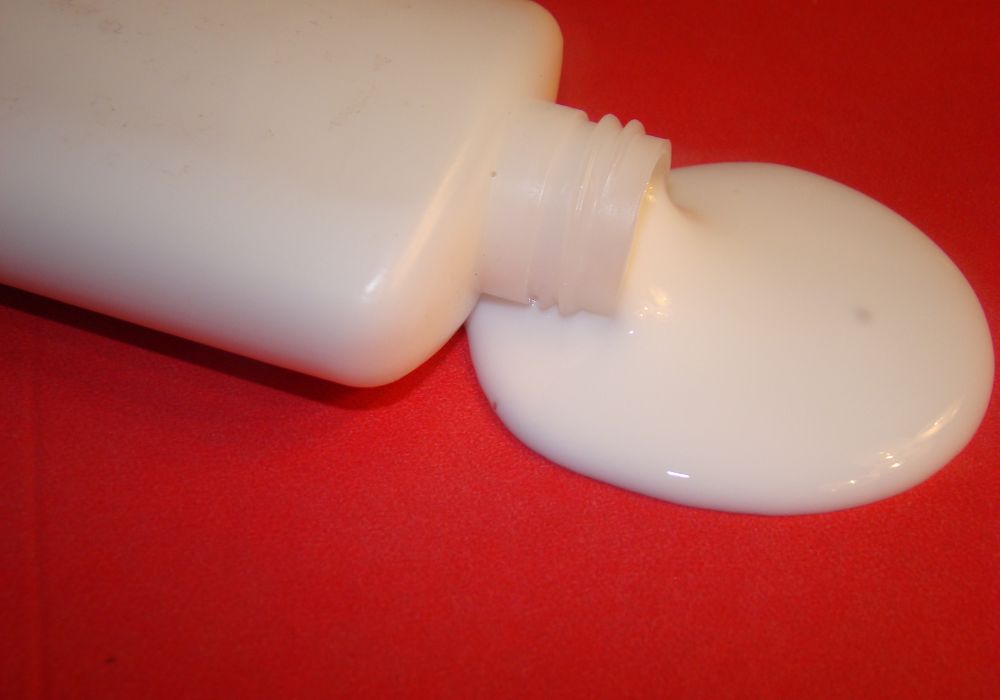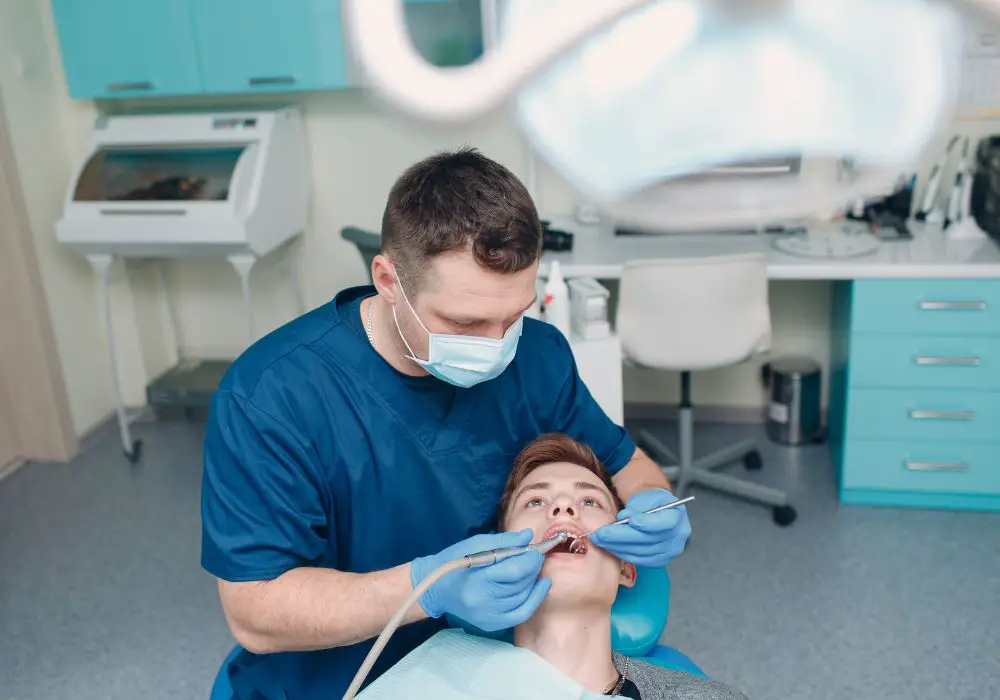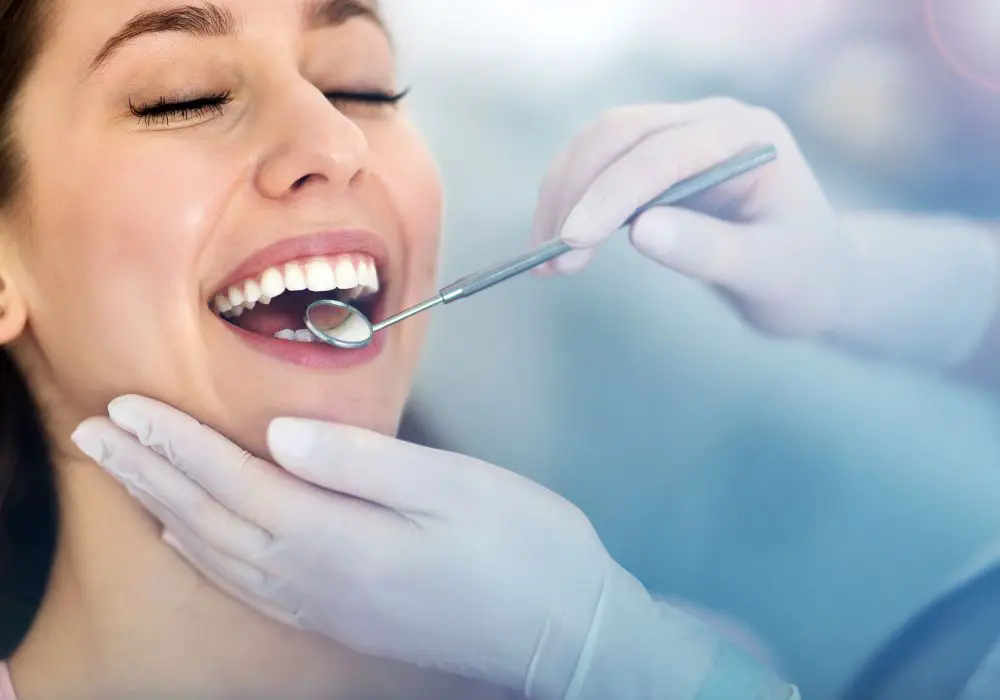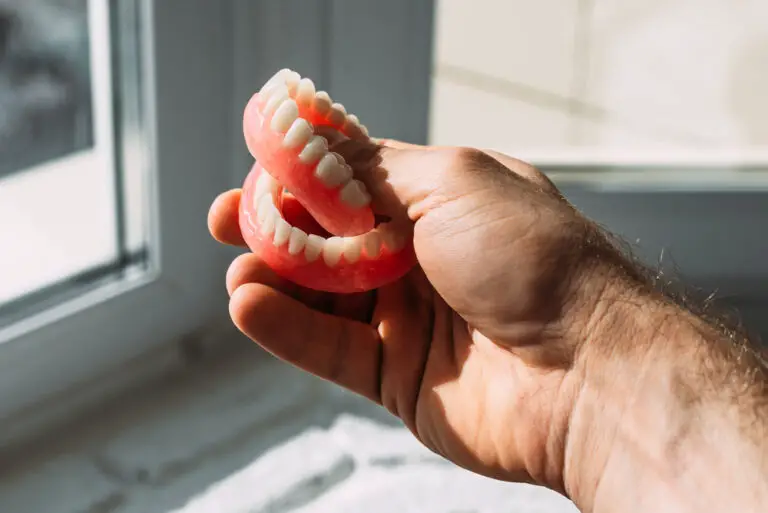Losing a tooth can be a very distressing and traumatic event. Having a tooth knocked out or extracted unexpectedly leaves a visible gap that can greatly impact a person’s smile and self-confidence. The thought of missing a front tooth when giving a presentation at work or going out on a date may tempt some people into trying quick fix home remedies like gluing a tooth back in place temporarily. Gorilla Glue is a popular heavy duty household adhesive, but it is critical to understand the dangers and avoid using it inside the mouth on teeth and oral tissues.
This article will take an in-depth look at whether Gorilla Glue is suitable for dental use, examine better temporary tooth replacement options, outline the professional restoration techniques dentists use for lost teeth, and provide tips on how to take action if you lose a tooth suddenly.
What is Gorilla Glue?

Gorilla Glue is a brand of polyurethane-based adhesive. It was first invented in the 1990s by a woodworker named Harry Coover who wanted a waterproof glue strong enough to repair furniture joints.
Some key facts about Gorilla Glue are:
- Works on porous and non-porous surfaces – bonds wood, stone, metals, ceramic, foam, glass etc.
- Classified as a “gap filling” glue – expands 3-4 times when curing to fill gaps between materials
- Moisture activated – the glue needs water to start curing. It feels tacky and sticky when wet.
- Dries natural amber color. Can be scraped or sanded when dry.
- Sets and becomes hard to the touch in 1-2 hours after gluing under normal conditions
- Fully bonds and reaches maximum strength in 24 hours
- When cured it feels hard and solid, similar to plastic
- Rated to withstand temperatures from -20 to 150 degrees Fahrenheit
Gorilla Glue does have very effective bonding properties on household objects and building materials. However, it is absolutely not intended for or approved for use inside the human mouth. The packaging clearly states to “avoid contact with eyes and skin” and warns “Not for use on areas that come in direct contact with food or body fluids”.
Dangers of Using Gorilla Glue on Teeth
Despite Gorilla Glue’s high strength, using it inside the mouth on teeth or dental work would be extremely hazardous and is not advised under any circumstances. Here are the main risks involved:
Toxicity to Tissues
The ingredients in Gorilla Glue such as polyurethane, diphenylmethane diisocyanate (MDI), and diisocyanate polymers have not been cleared or tested for safe use inside the human body. These chemicals could potentially burn, irritate, inflame or even damage oral tissues, gums, lips and tongue. Using them in or around a sensitive tooth nerve could be extremely painful and cause irreversible pulp damage.
Expansion During Curing
A key property of Gorilla Glue is that it foams and expands 3-4 times as it cures. This expansion could exert outward pressure on surrounding teeth and bone, potentially damaging the periodontal ligament fibers connecting the tooth root to the jaw. This expansion could also put upward pressure on a repaired tooth and surrounding gum tissue, resulting in even greater irritation and inflammation of tissues.
Risk of Obstruction
If enough Gorilla Glue is used on a tooth, the initial swelling and subsequent hardening of the glue could partially obstruct the mouth. It could impact normal movements of the tongue, potentially interfering with breathing, speaking, and swallowing.
If the glue drips down the throat before hardening, it could also obstruct the airway passages or nasal cavity. Its rapid bonding properties mean it could stick dangerously within the esophagus or nasal/sinus membranes.
Difficulty Removing Cured Glue
Once fully hardened, Gorilla Glue would be extremely challenging to pry off or scrape away from tooth surfaces, gum tissue, or anywhere else it becomes bonded inside the mouth. Attempting to break the adhesive free runs the risk of unintentionally damaging, chipping or pulling away parts of the tooth enamel or composite restorations as it is being removed. This could harm the tooth integrity and require significant dental work to repair.
Interference With Healing Process
Any foreign material like household glue left inside a tooth socket or bonded across damaged areas of a tooth could impede the natural healing process. It may physically block blood clot formation needed for the tooth socket to close. It may also prevent gum tissue from properly reattaching to the tooth surface, leading to defective healing. This delays recovery and increases the risk of complications like dry socket infections.
Infection Risk
Trapping any external substance like craft glue against tissues provides an ideal breeding ground for dangerous oral bacteria, viruses and fungi to grow. This dramatically escalates the chances of developing a localized or systemic infection. Infections in the mouth can quickly spread to the bloodstream and other body systems.
Impeded Dental Work
Hardened glue could get in the way of proper seating and placement of crowns, bridges, partial dentures, braces or dental implants. It may have to be surgically removed first before other necessary dental procedures can be performed. This delays restoration and prolongs the time a patient must go without a proper functioning tooth.
Considering all these downsides, it is clear that using household glue formulated for crafts and construction inside the mouth would be very unsafe and is not recommended. Proper emergency dental treatment should be promptly sought out instead.
Safer Temporary Tooth Replacement Options

If you suddenly lose an adult tooth, here are some safer temporary solutions to protect the gap area while you make arrangements to see a dentist:
Try Replacing Tooth Fragment
If the natural tooth crown breaks but a fragment remains, it may be possible to carefully glue the detached fragment back onto the exposed dentin of the remaining root. This should only be done with proper isolation and great precision using approved dental adhesives like Prime&Bond, PermaQuik or All-Bond Universal. Avoid touching the actual adhesive.
Denture Adhesives
Special non-toxic dental paste or putty can be used for very short term stabilization of loose natural teeth or securing loose fitting dentures. These work by gripping the soft tissue. Brands like Fixodent or Poligrip are designed for oral use.
Dental Wax
Heated orthodontic wax can be gently applied and molded across a fractured or sharp tooth edge to prevent further injury to tongue and inner cheeks. This is only a very temporary protective layer.
Temporary Partial Denture
Plastic and wire partial dentures are available to temporarily fill in gaps between missing teeth while permanent restorations are being made. A flipper is a simple and affordable tooth replacement option.
Composite Resin Bandage
A dentist can quickly apply a hardened resin material across a fractured tooth stump to seal internal tubules and reshape the tooth, preventing further damage in the short term.
Orthodontic Wire Splint
Your dentist may be able to bond thin orthodontic wires to adjacent stable teeth and create a temporary bridgework splint to fill the gap left by a missing tooth.
While not intended as permanent remedies, these temporary options can help provide some level of tooth function, prevent injury to the tongue and lips, limit teeth shifting, and restore a bit of facial esthetics while waiting to visit the dentistry office. They are far safer choices than Gorilla Glue.
What To Do If You Lose A Tooth
Losing a tooth is always an unsettling event, but taking prompt action is key. Follow these steps if a tooth is knocked out, extracted or falls out unexpectedly:
- Try to recover the tooth if possible – pick it up carefully by the white enamel crown, not the root. Rinse dirt off gently.
- Keep the tooth moist in milk, saline solution or special storage media like Save-A-Tooth to help maintain cell viability.
- Rinse mouth out with warm salt water to flush the socket and clean it after tooth loss.
- Use gauze, a tea bag, or other clean material to lightly bite down on to control bleeding.
- Limit activities and foods that might dislodge the blood clot forming within the tooth socket.
- Take over-the-counter pain relievers as needed, but avoid using aspirin which may prolong bleeding.
- Arrange emergency dental care right away. Many practices offer same day emergency treatment. The sooner the tooth is reimplanted or socket evaluated, the better.
- Ask your dentist about options to temporarily fill the gap for esthetics and function while a permanent restoration is made.
- Follow your dentist’s post-care instructions carefully including strict oral hygiene and using prescribed medications like antibacterial rinses.
Seeking experienced professional dental assistance as soon as possible offers the best chance of preserving your smile and preventing future dental complications. Avoid “do-it-yourself” gluing. Introducing household materials not designed for intraoral use often creates bigger problems. With modern dental techniques, teeth can frequently be saved, replaced or restored successfully.
Professional Tooth Replacement Options

Depending on factors like the tooth affected, amount of remaining root and bone, time since loss, and condition of the surrounding soft and hard oral tissues, your dentist will advise on appropriate treatment options. These may include:
Tooth Reimplantation
If an adult tooth is completely knocked out but retrieved quickly, a dentist may be able to successfully reinsert it back into the socket and splint it. This helps regrow the periodontal ligament fibers and retain tooth viability. Success rates are highest if done within 20-30 minutes of avulsion.
Root Canal Therapy
If a tooth is cracked or fractured but the roots and supporting bone remain strong, a root canal procedure can remove damaged pulp tissue and restore full tooth function. A permanent crown is placed afterward.
Dental Implant
For a completely lost tooth, a dental implant fused into the jawbone mimics the root structure. An artificial tooth crown is attached to the implant via an abutment to closely resemble and function like a real tooth. Implants have excellent long term success rates above 95%.
Dental Bridge
Adjacent intact teeth can be reshaped and used as anchors to permanently “bridge” a gap using one or more artificial teeth bonded across the space. This restores the appearance and chewing ability.
Removable Dentures
Partial or full dentures constructed of molded acrylic and metal are a more affordable tooth replacement option. They can replace anything from one single tooth to a whole set of teeth. Dentures are removable by the patient.
Bone and Soft Tissue Grafts
Severely damaged areas may need bone grafts or membranes placed to regenerate enough bone and gum tissue to support restorations. This is often done in conjunction with implants.
With close communication and planning with your dentist, there are many great functional and esthetic solutions available these days for replacing lost or damaged teeth. Avoid shortcuts like gluing and seek proper professional care instead.
Frequently Asked Questions
1. What should you do if Gorilla Glue accidentally gets on your tooth?
Do not bite down or fully close your mouth if Gorilla Glue contacts a tooth. Carefully dab off any excess adhesive first before it bonds. Keep your mouth open wide and avoid any contact between teeth as the glue expands and hardens. Seek dentist help ASAP to have the solidified glue assessed and possibly removed before it causes damage. Do not try extracting it yourself.
2. Why is super glue or Krazy Glue also not good to use on teeth?
Cyanoacrylate “super glues” are designed for bonding plastic, metal and ceramic surfaces, not living oral tissues. Using them in the mouth could allow accidental bonding of lips, cheeks or gums which requires emergency removal. Super glues also lack the flexural strength and resilience needed to withstand normal tooth function and chewing forces over time.
3. What properties make dental adhesives better for tooth repairs?
Multi-purpose household glues are too caustic and rigid for intraoral use. Dental adhesives like Prime&Bond, OptiBond, All-Bond Universal or PermaQuik are non-irritating formulas specially designed to integrate with human tooth structure. They also have some flexibility built in to endure chewing forces. Using the right product ensures the safest, most functional tooth repairs.
4. Can denture paste temporarily re-affix a fully lost tooth?
No, while denture adhesives like Poligrip can help stabilize loose dentures or a loose natural tooth, they do not provide enough bonding strength to reintegrate a completely lost tooth back into its socket. Proper regeneration of the periodontal ligament fibers is critical for tooth viability after avulsion and needs to be done quickly under ideal conditions.
5. How long can you realistically wait before trying to reimplant an avulsed tooth?
The sooner the better! Best case is reimplantation within 5-10 minutes. The longer the tooth goes without nutrients from surrounding tissues, the lower the survival prognosis. However, still attempt to see a dentist up to 1-2 hours later for urgent assessment and possible reimplantation. Extraoral storage in milk or special solutions improves outcomes if immediate reimplantation is not possible.
Conclusion
Losing a permanent tooth can significantly impact a person’s quality of life and self-image. In an emergency, it may be tempting to use heavy duty adhesives like Gorilla Glue to try and fix the problem at home. However, these types of products can cause severe harm and complications when used inside the mouth. Instead, safer temporary tooth replacements should be utilized until professional dental treatment is obtained. With current techniques like dental implants, bridges and dentures, teeth can often be repaired, replaced or restored for optimal function and a beautiful natural smile. Seeking prompt care is key. Avoid “DIY dental work” with household glues and contact your dentist right away if you experience tooth loss.







